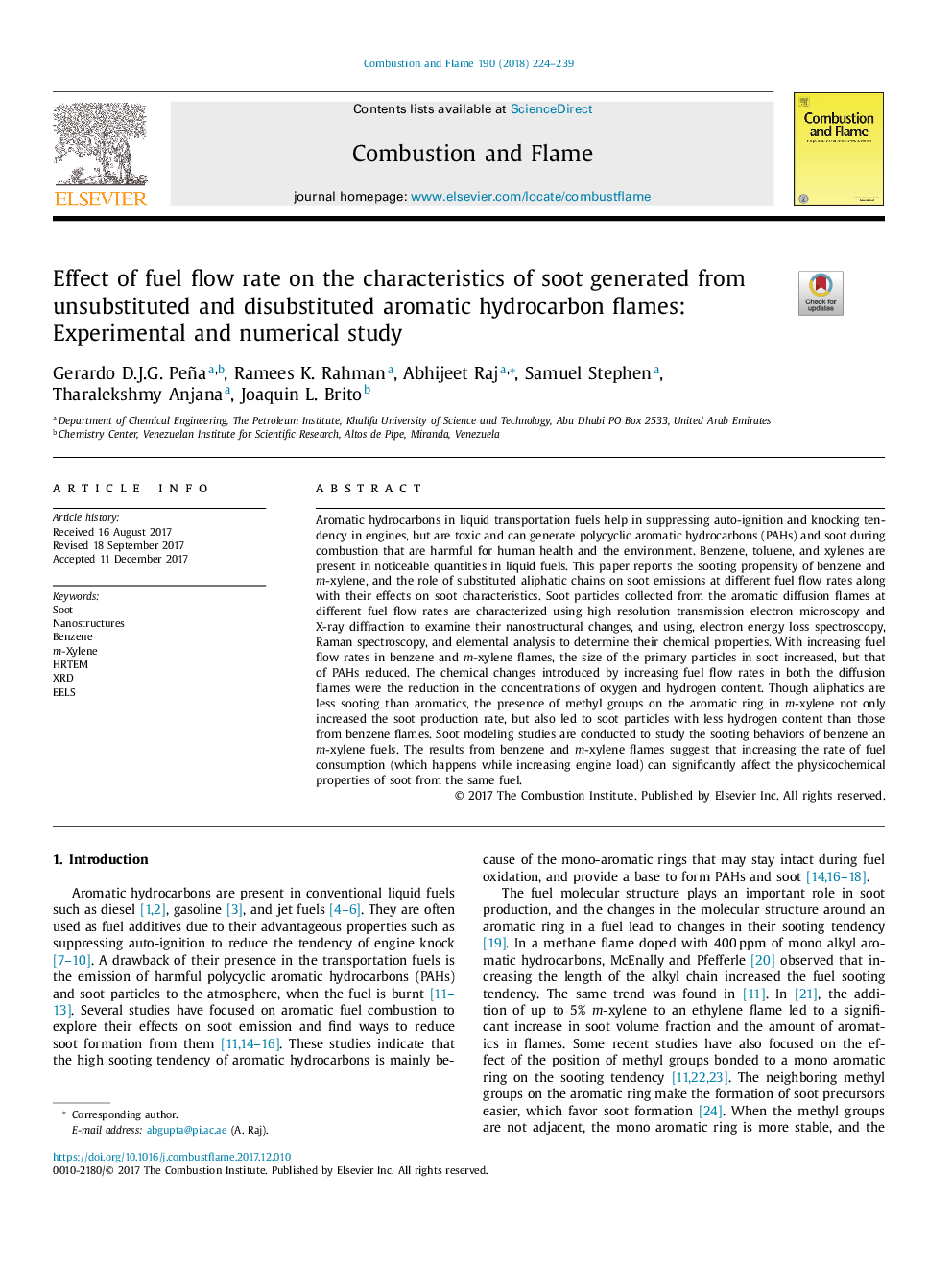| Article ID | Journal | Published Year | Pages | File Type |
|---|---|---|---|---|
| 6593835 | Combustion and Flame | 2018 | 16 Pages |
Abstract
Aromatic hydrocarbons in liquid transportation fuels help in suppressing auto-ignition and knocking tendency in engines, but are toxic and can generate polycyclic aromatic hydrocarbons (PAHs) and soot during combustion that are harmful for human health and the environment. Benzene, toluene, and xylenes are present in noticeable quantities in liquid fuels. This paper reports the sooting propensity of benzene and m-xylene, and the role of substituted aliphatic chains on soot emissions at different fuel flow rates along with their effects on soot characteristics. Soot particles collected from the aromatic diffusion flames at different fuel flow rates are characterized using high resolution transmission electron microscopy and X-ray diffraction to examine their nanostructural changes, and using, electron energy loss spectroscopy, Raman spectroscopy, and elemental analysis to determine their chemical properties. With increasing fuel flow rates in benzene and m-xylene flames, the size of the primary particles in soot increased, but that of PAHs reduced. The chemical changes introduced by increasing fuel flow rates in both the diffusion flames were the reduction in the concentrations of oxygen and hydrogen content. Though aliphatics are less sooting than aromatics, the presence of methyl groups on the aromatic ring in m-xylene not only increased the soot production rate, but also led to soot particles with less hydrogen content than those from benzene flames. Soot modeling studies are conducted to study the sooting behaviors of benzene an m-xylene fuels. The results from benzene and m-xylene flames suggest that increasing the rate of fuel consumption (which happens while increasing engine load) can significantly affect the physicochemical properties of soot from the same fuel.
Related Topics
Physical Sciences and Engineering
Chemical Engineering
Chemical Engineering (General)
Authors
Gerardo D.J.G. Peña, Ramees K. Rahman, Abhijeet Raj, Samuel Stephen, Tharalekshmy Anjana, Joaquin L. Brito,
